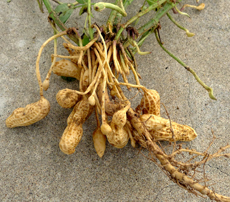How to Get the Right Hair-cut for Your Plants
Shown here are a range of hand pruners. The left and middle hand pruning tools are two types of bonsai shears. The left most tool can only be used to cut very thin branches whereas the middle one can be used for a much thicker branch. The rightmost tool is a bypass secateurs which can be used to cut branches that are up to 2cm in diameter.
Before you grab a pair of scissors to give your plant a 'hair-cut', stop and check to see if you are using the right tools to perform the job.
In horticulture, specific cuttings tools have been devised for specific roles to ensure the comfort and safety of the gardener, as well as to ensure the plant gets a clean cut.
Depending on the thickness of the branch or stem you are intending to cut, the right cutting tool needs to be used. Using the wrong type of tool can lead to excessive exertion of effort, which may lead to undue strain on your hands after prolonged use. It can also cause damage to the plant.
The two hand pruning tools most commonly used by home gardeners include hand pruners and pruning saws. These tools are popular because they are small and portable. They also offer an additional advantage of not requiring a large storage space.
Hand Pruners
The most common hand tool available is the hand pruner, also known as secateurs or hand shears. Two main types are available locally and can be operated by using just one hand:
- Flower/Bonsai shears: This tool has two straight cutting blades that narrow towards the tip. The narrow blade and sharp tip allow access to tight areas of a plant and permit delicate pruning work to be done. It is mostly used for pruning thin branches in bonsai and trimming flower stems and leaves by the florist.
- Bypass secateurs: This tool is most commonly used for general garden cutting duties and should only be used to cut up to 2cm-thickness. The cutting portion consists of one curved, sharpened blade that slips past a thicker, unsharpened hook.
Pruning Saw
Another commonly sold hand tool in local nurseries is the pruning saw. This tool is used to prune branches that cannot be cut with secateurs and lopping shears. It comes in many sizes, with either straight or curved blades and teeth that are either fine or coarse.
Compared to lopping shears, pruning saws are preferred by some gardeners as they can be folded and carried around easily. They also require a smaller storage space compared to the former.
As a rough guide, pruning saws can be used to cut branches that are up to 6cm in diameter. A finely-toothed pruning saw can be used to remove thinner branches whereas a more coarsely toothed saw is used for thicker branches. The alignment of the teeth on the pruning saw is also designed to cut when the saw is being pulled.
For safety, make sure the pruning saw you use has a blade guard. The blade can be folded into the handle when not in use, and locked in a closed position to allow the tool to be carried around easily and safely.
The pruning saw is a hand pruning tool that can be folded so that it can be carried around safely. It is used to cut thicker branches that are up to around 6 cm in thickness.
How to maintain your tools
- Sharpen blades regularly.
- Wipe the blades of all cutting tools clean after every use. Clean them with turpentine if there is plant sap stuck on them. Apply a few drops of light lubricating oil to the blades and moving parts before storing the tool.
- Tools can spread disease pathogens from one diseased plant to another that is healthy. Cutting blades can be disinfected with rubbing alcohol. Do not use bleach for this purpose as it is a corrosive agent.
By Dr Wilson Wong
Have views or comments on this article? Let us know via this form. If you would like to give us feedback on any other areas relating to our parks and gardens, please submit via https://www.nparks.gov.sg/feedback







Agung 5/7/2014 11:45:32 AM